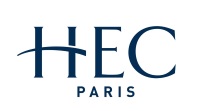No 1089: The Capacity of Trading Strategies
David Thesmar () and Augustin Landier ()
Abstract: Due to non-linear transaction costs, the financial performance of a trading strategy decreases with portfolio size. Using a dynamic trading model a la Garleanu and Pedersen (2013), the authors derive closed-form formulas for the performance-to-scale frontier reached by a trader endowed with a signal predicting stock returns. The decay with scale of the realized Sharpe ratio is slower for strategies that (1) trade more liquid stocks (2) are based on signals that do not fade away quickly and (3) have strong frictionless performance. For an investor ready to accept a Sharpe reduction by 30%, portfolio scale (measured in dollar volatility) is given by a simple formula that is a function of the frictionless Sharpe, a measure of price impact, and a measure of the speed at which the signal fades away. They apply the framework to four well-known strategies. Because stocks have become more liquid, the capacity of strategies has increased in the 2000s compared to the 1990s. Due to high signal persistence, the capacity of a "quality" strategy is an order of magnitude larger than the others and is the only one highly scalable in the mid-cap range.
Keywords: trading costs; asset pricing anomalies; asset management; arbitrage
55 pages, March 26, 2015
Full text files
papers.cfm?abstract_id=2585399
Questions (including download problems) about the papers in this series should be directed to Antoine Haldemann ()
Report other problems with accessing this service to Sune Karlsson ().
RePEc:ebg:heccah:1089This page generated on 2025-06-10 11:14:55.

